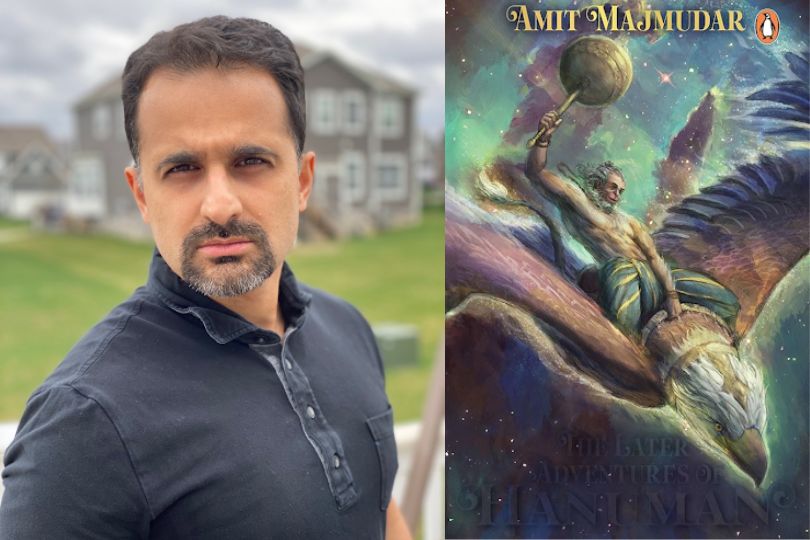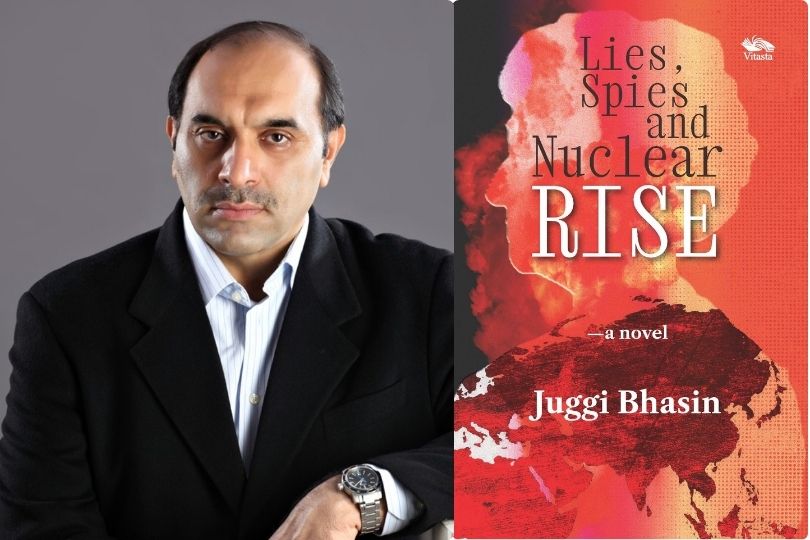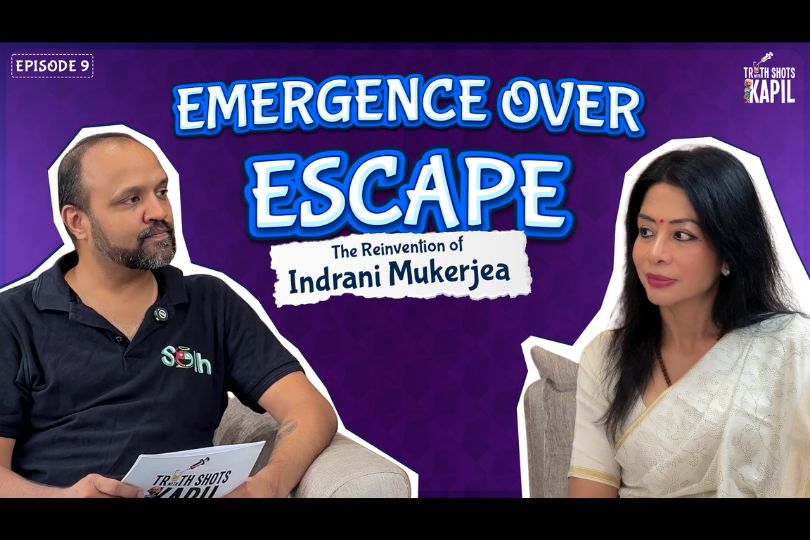Interview with Amit Majmudar Author of The Later Adventures of Hanuman
Amit Majmudar, a radiologist and author, explores Hanuman's adventures, weaving mythology with contemporary themes of love, grief, and imagination.on Nov 01, 2024

About the Author
AMIT MAJMUDAR is a diagnostic nuclear radiologist who lives in Westerville, Ohio, with his wife and three children. He is the author of several volumes of poetry, most recently Dothead. He is also the author of Sitayana, a retelling of the Ramayana that focuses on Sita's fierce resistance. He is also the author of Godsong, a verse translation of the Bhagwad-Gita with commentary.
Frontlist: In Forty Tales of Hanuman, you explore Hanuman's long, lonely, yet eventful immortality. What drew you to explore Hanuman's journey after Rama's departure?
Amit: I think that the epic stories offer many gaps or spaces in which the poetic imagination can dilate and "fill out" the story without altering the original, known portions of the story. In the Mahabharata, we don't know what it was like growing up for Ghatotkach, Bheem, and Hidimba's son fathered in exile; the wandering sage Narada's memoirs would be very interesting indeed. In a similar way, I realized that Hanuman is chiranjeevi—he even shows up in the Mahabharata, centuries after the events of the Ramayana. Technically, he should still be around. What does he remember? What emotions does he feel? And what adventures has he been having?
Frontlist: You've written both Sitayana and this book on Hanuman's adventures. What draws you to Hindu mythology, and how do you make these ancient stories resonate with contemporary readers?
Amit: I have also retold the Mahabharata in three volumes, the first two of which have been released so far by Penguin India: The Book of Vows and The Book of Discoveries. The great riches of Hindu mythology are a precious inheritance for me. I am a loving student of mythologies worldwide, and I am proud of the awe-inspiring variety and metaphysical weight of Hindu mythology. Perhaps because ours is the oldest living mythological religion, the narratives have grown by accretion over centuries; among pearls, it is the biggest, most lustrous pearl. For example, Krishna's famous lila in Vrindavan, his gallivanting as a young man with the gopis, is something that enters his story much later. Even the Uttarakanda of the Ramayana, in which the second exile complicates Rama and Sita's relationship, is believed by many scholars to be fan fiction added much later. I try to make these stories contemporary in the telling primarily through language and immediacy of personality; I do not wrench the stories or characters into something they're not just to make them dovetail with the ideological fixations of the day.
Frontlist: Hanuman's immortality is tied to his grief over Rama's departure. How did you approach the themes of grief and longing in your stories? What messages about love and loss do you hope readers, especially young ones, take away?
Amit: I wanted Hanuman, for all his divinity and supernatural power, to miss Rama and Sita as a human being would. That gives readers young and old permission to feel their darker or sadder emotions, and the inspiration to continue to fight and flourish in spite of them—just as Hanuman does in his forty adventures.
Frontlist: The tales in this collection are action-packed, fast-paced, and filled with Hanuman's exciting escapades. Was there a particular story that you found most challenging or enjoyable to write?
Amit: I found them all very easy to write because I felt seized by a powerful inspiration. These tales were the sort that "wrote themselves," as I produced them one after another, as though Hanuman himself were dictating them to me. The story that I found most enjoyable to write is a tough question since I enjoyed writing them all so much, but readers have told me they particularly enjoyed the one in which Hanuman and Garuda have a flying contest and the one in which Hanuman helps a beggar.
Frontlist: In creating new adventures for Hanuman, how much of your storytelling comes from deep research into mythology, and how much is pure imagination?
Amit: Philip Lutgendorff compiled vernacular folk tales about Hanuman in a book entitled Hanuman's Tale: Messages of a Divine Monkey. I read that, and Mr. Lutgendorff was kind enough to endorse my book. However, for the stories themselves, I wanted to set them in a modern world in many instances so they can be imagined freely.
Frontlist: You're a diagnostic nuclear radiologist by profession, yet your writing delves deeply into mythological and spiritual themes. How do you navigate these two very different worlds?
Amit: Generally, by keeping them apart! If I describe mythological things in my radiology reports, I am likely to find myself in court for malpractice. I don't recall x-ray vision being one of the eight siddhis or yogic supernatural powers, so Hanuman flies and changes size in his adventures, but he does not see people's bones.
Frontlist: Do your children influence your writing in any way, especially when you're working on stories for younger readers?
Amit: I think having three children has given me a sense of how to entertain children interested in Hindu mythology. My own children are the intended audience for my stories for younger readers, but everyone else's children are welcome to listen in. I can't imagine having written either this book or my earlier book for younger readers, Heroes the Colour of Dust, about Gandhi and the Salt March and his stalwart bodyguard of sparrows, without keeping Shiv, Savya, and Aishani in mind.



.jpg)






.jpg)


.jpg)
.jpg)
.jpg)

.jpg)

.jpg)










Sorry! No comment found for this post.